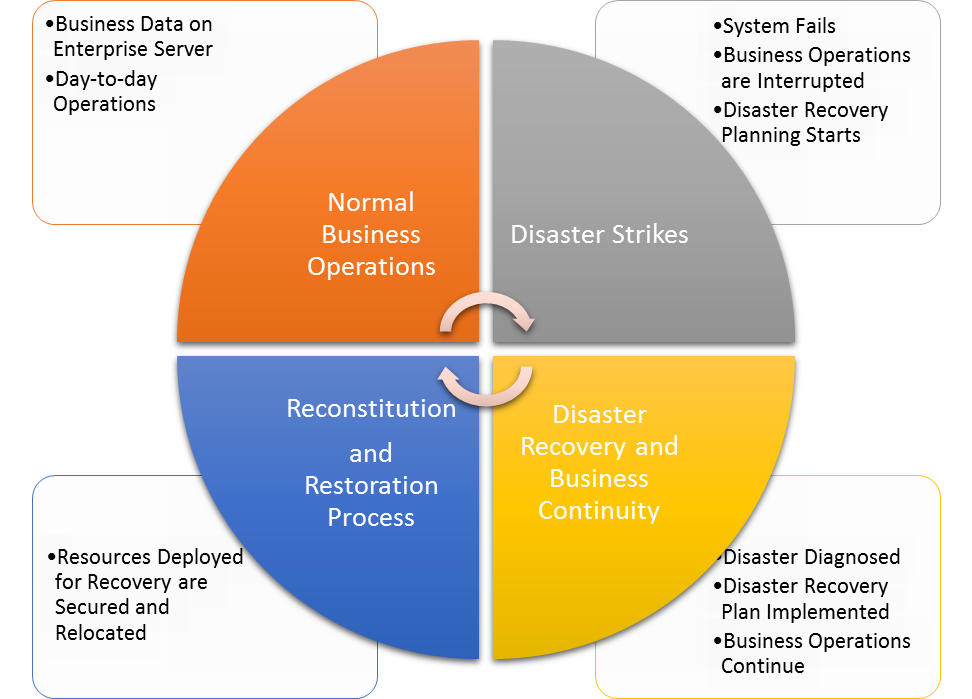Guide to create Disaster Recovery Plan using best practice information as easily and efficiently possible.
We believe a solid disaster recovery/business continuity plan is only effective if it’s easy to write, effortless to maintain and quick to jump into action. Our training options ensure this happens.
Whether you are brushing up your skills or starting fresh, you can learn how to identify vulnerabilities and implement countermeasures to prevent and mitigate threats to your business. You will take away practical techniques for creating and maintaining a business continuity plan (BCP) and the steps to build an infrastructure that supports it. Planning is only part of the process; delivering and maintaining is just as important. Our process will ensure that you understand the principles behind your plan and that you’re comfortable taking action to keep it relevant.
Learn to build, manage and maintain a recovery plan using industry standards mixed.


Information Gathering
Organize the Project
- Scope
- Objectives
- Assumptions
- Time Table
- Draft Project Plan
- Assignment of Task & Responsibility
- Approval
- Plan Organization
- Project Plan
Conduct Business Impact Analysis
- Identify functions, processes and systems
- Interview information systems support personnel
- Interview business unit personnel
- Analyze results to determine critical systems, applications and business processes
- Prepare impact analysis of interruption on critical systems
- Business Impact Analysis
- Critical System Ranking
Conduct Risk Assessment
- Review backup systems
- Review data security
- Review policies on personnel termination and transfer
- Identify systems supporting mission critical functions
- Identify Vulnerabilities (Such as flood, tornado, physical attacks, etc.)
- Assess probability of system failure or disruption
- Prepare risk and security analysis
- Security Documentation
- Vulnerability Assessment
Develop Strategic Outline for Recovery
- Business Impact Plan
- Hardware and Operating Systems
- Communication
- Applications
- Facilities
- Transaction Volume
- Dollar Value
- Estimated processing time
- Allowable delay
- Other Critical functions
Review Onsite and Offsite Backup and Recovery Procedures
- Review current records (OS, Code, System Instructions, documented processes, etc.) requiring protection
- Review current offsite storage facility or arrange for one
- Review backup and offsite storage policy or create one
- Backup and Recovery Procedure
Selecting Facility
- Identify alternative facilities
- Review cost/benefit
- Evaluate and make recommendation
Plan Development and Testing
Develop Recovery Plan
- Objective
- Plan Assumptions
- Criteria for invoking the plan
- Roles Responsibilities and Authority
- Procedures for operating in contingency mode
- Resource plan for operating in contingency mode
- Criteria for returning to normal operating mode
- Procedures for returning to normal operating mode
- Procedures for recovering lost or damaged data
- Testing and Training
- Plan Maintenance
- Appendices for Inclusion
Test Plan
- Develop test strategy
- Develop test plans
- Conduct tests
- Test Results
- Test Evaluation
- Modify the plan as necessary
Ongoing Maintenance
Maintain the Plan
- Review changes in the environment, technology, and procedures
- Develop maintenance triggers and procedures
- Submit changes for systems development procedures
- Modify unit change management procedures
- Produce plan updates and distribute
Perform Periodic Audit
- Critical
- Essential
- Necessary
- Desirable
